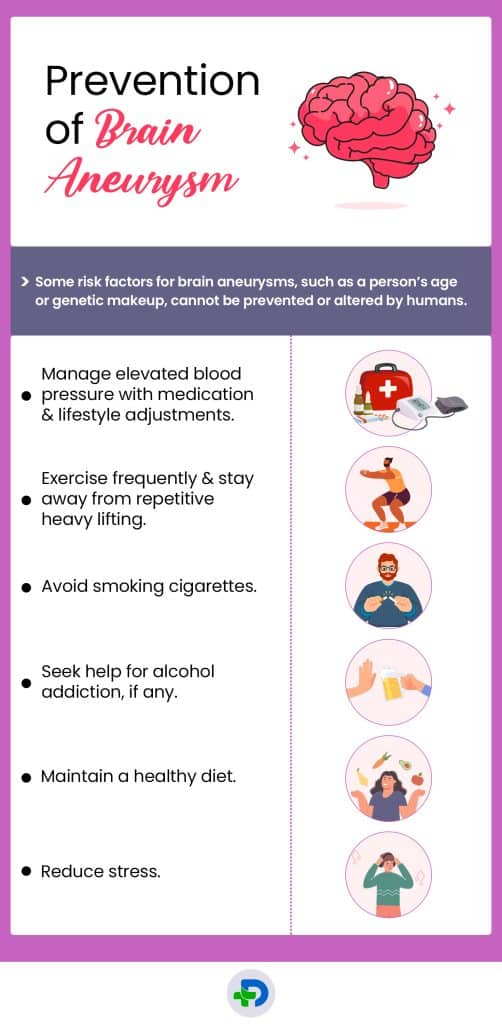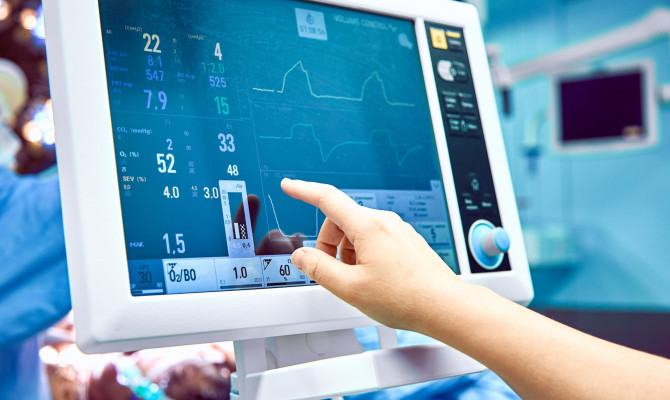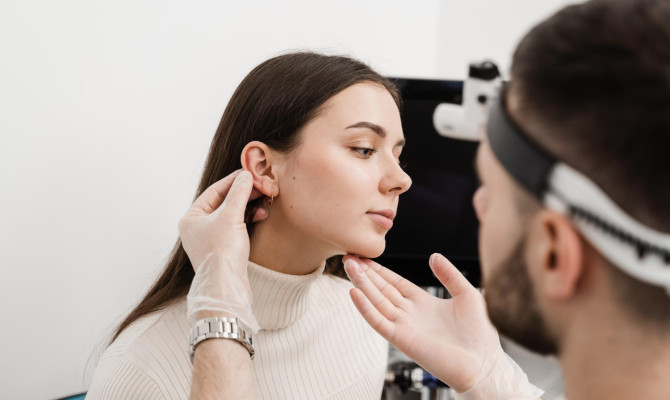Brain aneurysm : Causes, Symptoms, and Management

- Brain Aneurysm
- 14 Aug 2023
Overview
What is Brain Aneurysm ?
A brain aneurysm or cerebral aneurysm is a swelling in a vulnerable region of an artery wall in or near the brain. The blood flow’s continuous pressure pushes the weakened area outward, resulting in a bump resembling a blister. The aneurysm widens even more as blood pours into the protrusion. Brain aneurysms are frequent, affecting about 4% of the population. 30% of patients experience multiple aneurysms. Most brain aneurysms are petite and symptom less. If an aneurysm presses on adjacent nerves or brain tissue, it may produce symptoms. The aneurysm can sometimes break and result in bleeding in the brain.

Causes
Causes of brain aneurysm
- The walls of a brain vessel become fragile and brittle, causing brain aneurysms. Although they can develop anywhere in the brain, mostly grows in the large arteries along the bottom of the skull. They typically form at the places where vessels diverge.
- An artery wall congenital disability can occasionally cause an individual to be born with a brain aneurysm. An artery can become weaker due to many variables.
Risk factors
Associated risk factors of brain aneurysm
The following variables may increase the likelihood of developing an aneurysm:
- Genetic – the likelihood of developing brain aneurysms may be increased by having a biological sibling or parent with a history of the condition.
- Inherited connective tissue disorders – The blood arteries may weaken due to arteriovenous malformation, vascular Ehlers-Danlos syndrome, Marfan syndrome, autosomal dominant polycystic kidney disease, and fibromuscular dysplasia. 1Risk factors | Researched based study from Ninds.nih.gov
- Gender – Women are more affected by brain aneurysms than males.
- Age – can develop at any age. They are, however, more prevalent in adults aged 30 to 60.
- Smoking cigarettes – raises the possibility of developing and rupturing cerebral aneurysms.
- Drug abuse – blood pressure can be increased by drug misuse, especially cocaine. Intravenous use of illegal substances can result in an infection and may result in a mycotic aneurysm. 1Risk factors | Researched based study from Ninds.nih.gov
- High blood pressure – if untreated, can make the vessels weaker. Weakened arteries are more prone to aneurysm formation and rupture.
- Alcohol abuse – can increase the blood pressure thus raising the risk.
- Arteriovenous malformation (AVM) – The blood flow in the brain is impacted by tangled arteries and veins. 1Risk factors | Researched based study from Ninds.nih.gov
- Coarctation of the aorta – A narrow aorta increases risk. The aorta is a significant blood artery that transports blood with oxygen from the heart’s chambers to other body parts. 1Risk factors | Researched based study from Ninds.nih.gov
- Polycystic kidney disease – causes kidney sacs to fill with fluid.
- Head injury – may lead to certain aneurysm forms.
- Blood infections – some may increase the likelihood of an aneurysm.
- Cancers or tumors in the head or neck may increase the chance.
- High cholesterol level in the blood.
Rupture
Risk of a rupture
The following are possible risks of an aneurysmal rupture:2Rupture | Researched based study from Clevelandclinic.org
- Age – people above 70 years are more likely to get an aneurysmal rupture.
- Untreated blood pressure – those who are hypertensive but do not undergo any treatment.
- Emotional outburst – constant tension, an unexpected outburst of rage, or any powerful emotion.
- Physical strain – exerting effort to lift, carry, or push furniture or heavy objects.
- Size – giant irregular aneurysms risk rupturing more than smaller ones.
- Growing aneurysms – if the aneurysm keeps getting bigger, it could burst.
- Location – Aneurysms in the arteries on the back of the brain or in the artery in the front of the brain are more likely to burst than aneurysms in other parts of the brain.
Symptoms
Symptoms of brain aneurysm
There are no symptoms if a brain aneurysm is tiny or has not ruptured. But if it pushes against the brain or nerves, it may cause symptoms like:
- A widened pupil.
- Pain behind and above the eye.
- A visual disturbance.
- One sided facial numbness.
- Weakness.
- Numbness.
The following symptoms could result from an aneurysm rupture
- An excruciating headache – a primary sign. 3Symptoms| Researched based study from Mountsinai.org
- A drooping eyelid.
- Sensitivity to light.
- Double or blurry vision.
- A rigid neck.
- Vomiting and nausea.
- Loss of consciousness.
- Disorientation.
- Seizures.
Prevention

Prevention of brain aneurysm
Some risk factors for brain aneurysms, such as a person’s age or genetic makeup, cannot be prevented or altered by humans. However, people can reduce their chance of getting a brain aneurysm by:
- Manage elevated blood pressure with medication and lifestyle adjustments.
- Exercise frequently and stay away from repetitive heavy lifting.
- Avoid smoking cigarettes.
- Seek help for alcohol addiction, if any.
- Avoid using cocaine and other stimulants.
- Maintain a healthy diet.
- Reduce stress.
Complications
Complications of brain aneurysm
Following an aneurysm rupture, there may be a few complications:
- New bleeding from the aneurysm.
- Cerebral vasospasm – after a rupture, the blood artery may narrow.
- Ischemic stroke is caused by cerebral vasospasm, which decreases the brain’s blood supply.
- Hydrocephalus – a fluid buildup in the brain, increasing the pressure on the brain and causing tissue damage.4Complications | Researched based study from Mdpi.com
- Hyponatremia – A decline in the sodium levels in the blood can cause brain cell enlargement and long-term harm.
- Permanent brain injury.
- Coma or death.
Diagnosis
Diagnosis of brain aneurysm
A brain aneurysm is frequently unintentionally detected when an angiography, CT or an MRI scan is taken for another condition. The doctor may also find an aneurysm after rupture. The following imaging tests may help the doctor find a brain aneurysm:
- Computed tomography scan (CT scan) – used to look for anomalies, locate the aneurysm and determine whether it has ruptured or is leaking.
- Cerebral angiography – gives a picture of the brain’s blood vessels to help detect blood flow and vascular issues.
- Magnetic resonance imaging (MRI) – uses magnetic fields to find and identify an aneurysm by detecting subtle changes in brain tissue.
IADSA is the gold standard for diagnosing intracranial aneurysms, but CTA and MRA can also be analyzed.
- Intra-arterial digital subtraction angiography (IADSA) – is comparable to traditional angiography and shows the anatomy of the vessels in the picture. 5Diagnosis | Researched based study from Nlm.nih.gov
- Computed tomography angiography (CTA) – A CT angiography (CTA) can be obtained using a CT scan to examine the arteries.
- Magnetic resonance angiography (MRA) – visualizes blood arteries by combining magnetic resonance imaging (MRI) and intravenous contrast dye (IV). helps the physician see the blood vessels they are inspecting.
Management
Management of brain aneurysm
Managing an unruptured aneurysms
- Surgical clipping of the aneurysm that has not ruptured.
- Endovascular coiling.
- A flow diverter.
Treatment options that try to manage symptoms and reduce symptoms include
- Pain relievers – acetaminophen to manage headaches.
- Calcium channel blockers – may reduce the likelihood of blood vessel narrowing following a rupture. Nimodipine to lessen the risk of brain injury induced by inadequate blood flow. 6Management | Researched based study from Hindawi.com
- Vasodilators – widen the blood arteries to improve the free circulation of blood. It can be given by an IV or through catheter.
- Anti-seizure medicines – treat seizures brought on by an aneurysm rupture. The medications are usually not administered if there hasn’t been a seizure.
- Rehabilitative therapy – patients may require occupational, physical and speech therapy.
- Angioplasty – to widen a cerebral blood artery that has narrowed after rupture. The process can also lessen the risk of having a stroke.
- Shunt surgery and draining catheters can decrease pressure by an increased cerebrospinal fluid.
Treating a burst brain aneurysm
- Microsurgical clipping – a small metal clip is placed on the neck of the aneurysm to stop blood flow into it. The results of surgical clipping are permanent and quite effective. 7Management | Researched based study from Hopkinsmedicine.org
- Endovascular coiling – An aneurysm is fitted with a spiral-shaped coil to stop blood from entering it. Also, making the aneurysm’s blood clot.
- Endovascular stent – To treat the aneurysm, some brain aneurysms may benefit from using a tiny tube that holds an endovascular coil in place.
- Flow diversion with stents includes inserting a stent into the blood vessel to direct blood flow away from the aneurysm. Helpful in treating a more extensive aneurysm.
- Artery occlusion and bypass – is a two-step process for controlling brain aneurysms. The first step involves rerouting blood flow from the aneurysm. In the second stage, the surgeon uses a coil to seal up the aneurysm balloon and the surrounding area of the weakened artery.
- Observation.
Outlook
Outlook
A ruptured aneurysm in the brain can be dangerous and needs emergency care. The probability of dying or being disabled grows as time goes on with a burst aneurysm. The bleeding that results from a brain aneurysm rupture may only be for a few seconds. However, it can cause an increase in intracranial pressure that interferes with the brain’s ability to receive blood and oxygen. It’s possible to lose consciousness or even pass away. If a person with high blood pressure has a brain aneurysm, good blood pressure management may reduce the chance of rupture. Additionally, discussing quitting methods with their healthcare physician may help if a person smokes.
Any feedback on this article?
 This Articles content was accurate
This Articles content was accurate Very Informative Article
Very Informative Article I have a question or a comment
I have a question or a comment
 This article contains inaccurate content
This article contains inaccurate content This article was not helpful
This article was not helpful I have a question or a comment
I have a question or a comment
We appreciate your helpful feedback!
Checkout our social pages
References
-
National Institute of Neurological Disorders and Stroke
Cerebral Aneurysms | Risk factors
-
Cleveland Clinic
Brain Aneurysm | Risk factors
-
Mount Sinai
Aneurysm in the brain | Symptoms
-
MDPI Journals
The Pathogenesis of Hydrocephalus Following Aneurysmal Subarachnoid Hemorrhage | Complications
-
National Library of Medicine
An overview of intracranial aneurysms | Diagnosis
-
BioMed Research International
Continuous Selective Intra-Arterial Application of Nimodipine in Refractory Cerebral Vasospasm due to Aneurysmal Subarachnoid Hemorrhage
-
Johns Hopkins Medicine
Cerebral Aneurysm | Management






































